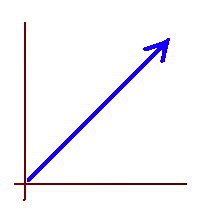Using the algebraic formula for the square of a sum
At the high school level, most students know all square numbers between one and one hundred: 1, 4, 9, 16, 25, 36, 49, 64, 81, 100.
That is, the squares of all numbers from 1 to 10. Many students also know 121 is the square of 11 and 144 is the square of 12.
That is about how far most people go memorizing square numbers. Relatively few people know 196 off the top of their head when asked: "How much is 14 times 14?"
I find useful the following exercise for students who are learning topics such as the quadratic formula and how to factor trinomials:
I remind them of the formula for the square of a sum:
( a + b )^2 = a^2 + 2ab + b^2
Then I suggest to them applying it in the following way to figure out the squares of numbers between 10 and 20:
(14)^2 = (10 + 4)^2 = 10^2 + 2(10)(4) + 4^2 = 100 + 80 + 16 = 196
(17)^2 = (10 + 7)^2 = 10^2 + 2(10)(7) + 7^2 = 100 + 140 + 49 = 289
Working out a few of these concrete, numerical examples helps students to see a general pattern and become more familiar with both the formula for the square of a sum and, at the same time, with squares of numbers between 10 and 20. This feels like a natural expansion from their previous knowledge of squares of numbers between 1 and 10.
Quantum Interference Loss via Path Encoding and Recovery by Quantum Erasure
-
If we regard interference and entanglement as the most distinctive features
of the quantum world, then “which-way” experiments lie at the heart of
quantum ...
1 day ago





1 comment:
Thanks! I love to do arithmetic in my head. What a fun new tool!
Post a Comment